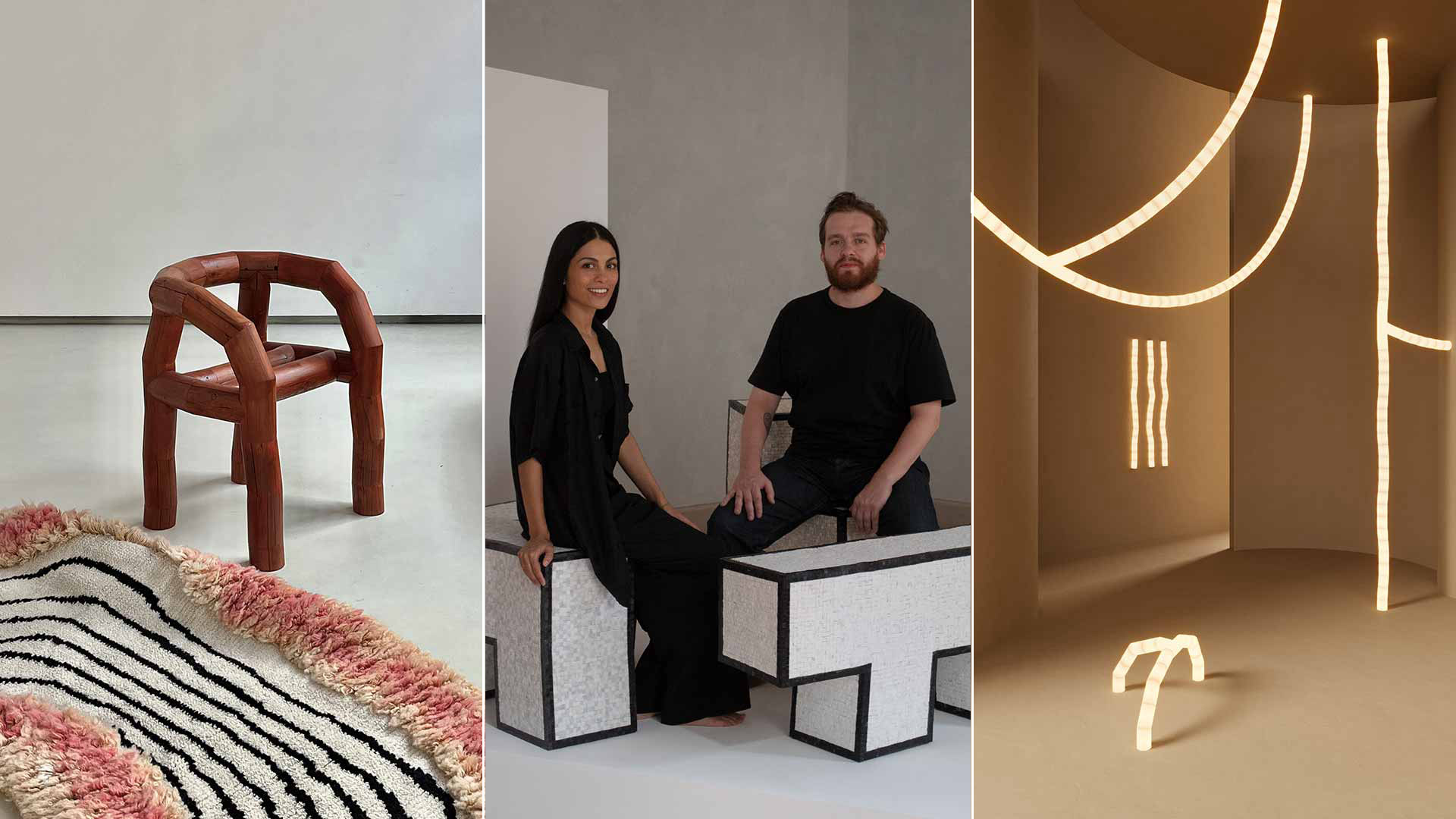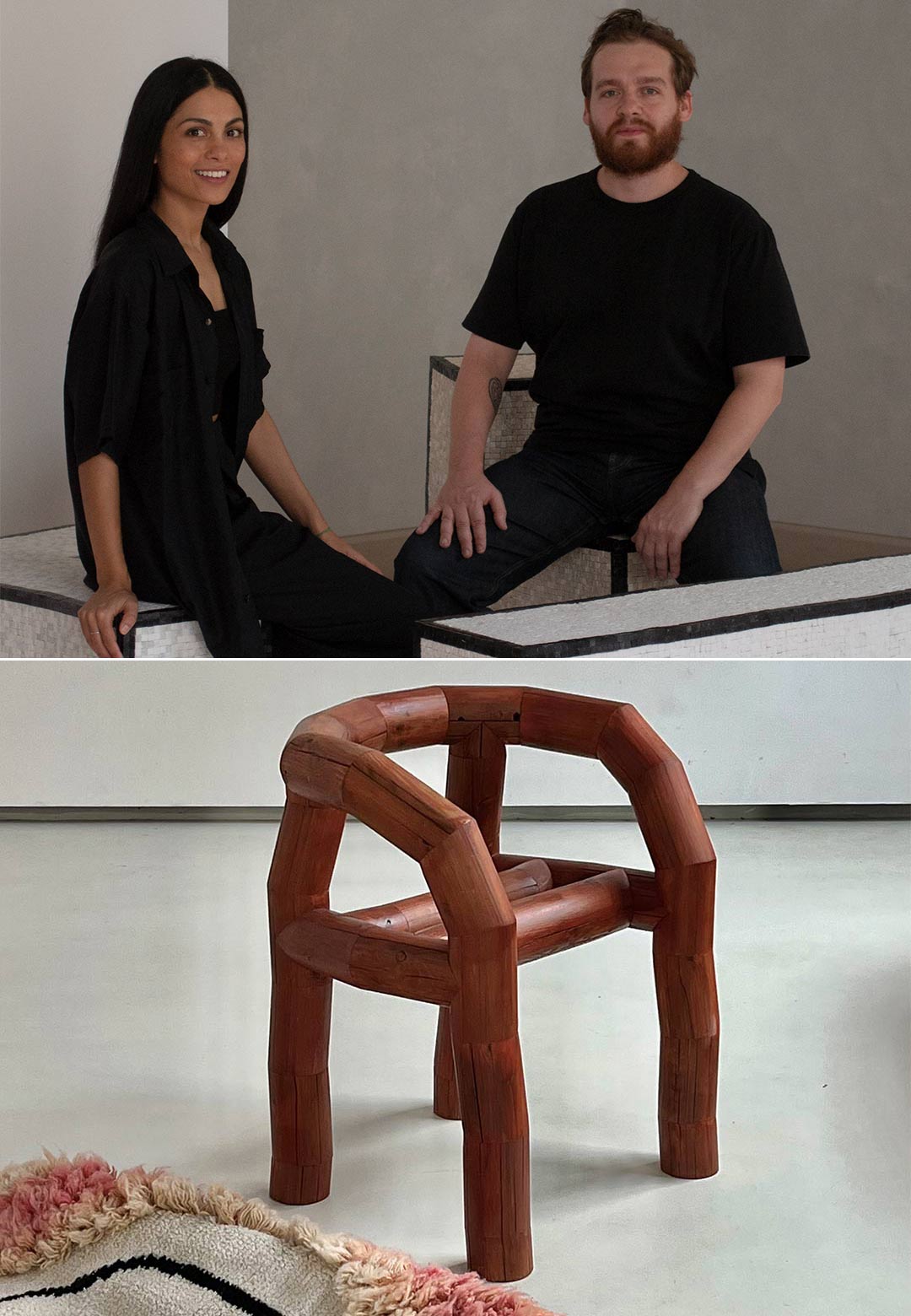The voracity of chasing perfection tends to sidetrack sundry creatives from the sacred act of creation. This loss of perspective is scarcely ever corrected or regained during their professional tenures, as the chase devours the invaluable education, clarity, and experience that the process brings. Codified by function and aesthetics, design is one such creative realm where the pinnacle of perfection is implied and relentlessly pursued; yet, few creative authors treat it as an ideal notion and not the final destination. Getting comfortable with the idea of imperfection is thus, integral to ‘interesting’ design, towards recognising that there are manifold ways to think, react, learn, unlearn, sustain and ultimately, create, to let yourself obtain a unique training in maturity through the process itself.
A creative collaboration etched between Cara Judd from South Africa, and Davide Gramatica from Italy, the multidisciplinary design studio places sustained research in ‘material, territory, and perception-making’ as their cornerstones, producing their series of referential design editions by working closely with artisans in both nations. Dialectic and informed by the nuances and delights that the creative journey brings, the studio displays an understated yet self-assured portfolio that moves towards simplicity and pared-back, natural palettes, keeping materials at the forefront, while lending itself to continued research.
With clients including Aybar Gallery, Mint Gallery, Galerie Philia, Uniqka, Portego, Muuto, Moose Knuckles, and more, the product designers also work with various global brands to produce their furniture collections. The studio also does the interior design and scenography for retail and residential spaces as well as exhibition designs. Represented by galleries in Europe and the US, they split their time to lecture at the Product Design Department at IED Milan and Como.
Judd and Gramatica's cross-cultural backgrounds have influenced and aided their design journeys in substantial ways. They met at a design school in Milan and continued working closely on personal projects, leading them to open their studio in 2016. “We are interested in exploring diverse materials and techniques in our works and our cross-cultural background opens discussions about the significance and perception that objects hold. We like to work locally, getting in touch with craftspeople in our native countries, and developing our projects in close collaboration with them,” the furniture designers relay to STIR.
Even at first glance, CARA \ DAVIDE’s solid and sculptural products reveal narratives that are appealing and inquisitive, displaying their proclivity towards nuanced craftsmanship. “When we set up the studio, we thought that we would work in the field that we studied, that of product or industrial design, but we did not have much success or interest from brands in that area. We started self-producing our ideas and our interest in different materials grew with each new project as they presented challenges of budget and availability of materials. Moreover, our cultural differences were important because our self-produced works were very personal. Material perception, territory and production techniques became a few recurring themes and are still very significant in our multidisciplinary studio today,” the South African and Italian designer tells STIR.
CARA \ DAVIDE seldom shy away from finding new roles and attaching fresher meanings to product designs, its ossified components long ideated or realised by creatives before. Mono-materials and their respective colour palettes are witnessed in their objects often, giving rise to materials being perceived in their natural states.
This can be seen in their Estetiche Sommerse–Unveiling hidden beauty design installation during Milan Design Week 2023 (conceived in collaboration with Park Associati and Fantini Mosaici), which included a set of two experimental and research-led works: the contemporary ‘Electronic Terrazzo’ and the Materozza collection, which comprised flooring and a set of sculptural side tables and stool designs crafted from production objects discarded for technical reasons, respectively.
In their set of three coffee tables and chair designs called Tessere, the familiar technique of mosaics is applied for a repetitive leitmotif, giving the pieces volume while establishing a particular ‘visual rhythm or a linear surface.’ For the furniture designs, they multiplied the block of the ‘tessera’ (regarded as a measurement unit), to conceive a cohesive mass that was reproduced to form the overall volume (the whole seat), finding completion as the seat/ coffee table hybrid. The ancient technique of Byzantine mosaic is revisited at the edges of the object, employing the dark border to highlight the perimeter, and to emphasise the interaction, or separation, between the subject and the context. A muted sculptural design was conceived, ‘tessera by tessera,’ where mosaics were understood in their individuality, unity, and multiplicity.
Their limited edition Segmento collection perceives ordinary objects in an abstracted form by ‘breaking down and reassembling’ materials. Thick logs, both solid and linear, were cut into segments to be reassembled into compact and curving lines, resulting in ‘fractured and angular’ contemporary designs that are never symmetrical and can be perceived differently from different perspectives. “As the initial form of the material is as important as the outcome, the finish is either lightly stained or left transparent, allowing the essence to remain visible,” Judd and Gramatica explain.
Exhibiting dynamic dimensions is their Tratti sculptural lighting design system for Tooy, which visually abstracts a solid line of light into smaller pieces. Here too, angular and fragmented elements create an ambient sculptural composition, diversifying across many surfaces from the floor to the wall and the ceiling, and in more elaborate formations, over all three planes. “The compositions may also remain small and discreet, nestled in a high corner, or even slightly more dramatic to accentuate such overlooked niches. The soft diffused light outlines the anatomical structure from within, highlighting the divisions and connections between each segment and adding a layer of detail visible only when illuminated. Indeed, the abstraction of such a luminous surface evokes a corporeal idea of light, while the sharp edges convey an idea of light in a solid form,” they explain.
Part of CARA \ DAVIDE Editions, the Archivio collections (CV01, VL01, RL01) reveal an understated yet arresting graphic appeal: developed with the Italian brand Mille997, the ‘Archivio VL01’ is a small table design constructed from a single sheet of archived Verde Lapponia granite; the ‘Archivio CV01’ is an occasional table made from a solo sheet of archived Calacatta Viola marble; while the ‘Archivio RL01’ side table/ bench is crafted from one sheet of archived Rosso Levanto marble. “The idea was to repurpose the archived material, transforming it into an object using few and simple technologies. For this reason, the sheet is sliced into smaller pieces and reassembled in a way that creates a volumetric presence through a graphic display of solids and voids,” the designers share.
“What started primarily with a geographical theme related to physical territories, in which we developed our work, and soon, it became a larger theme of contextualising our work through local materials, productions or cultural references,” they explain. “It’s important for us that the context in which an object is created informs the outcome whether it be a material, a production technique or the stories and input that we receive from the artisans we work with. In our practice, materials have been one of the most obvious links to different contexts, but historical and cultural references are important, too. An example of this approach is the recent workshop we held at Boisbuchet called ‘Crooked Lines’: The idea was to explore a physical object with the materials available at the domain, and to let go of any preconceived formal ideas and let the process or material drive the design, embracing the unexpected challenges, and not being precious about creating a ‘perfect’ object,” they elaborate.
Gramatica and Judd have a few running collaborations with brands, some of which will be presented at the upcoming Milan Design Week 2024. Concurrently, they are working on some self-produced aluminium objects, apart from gearing up for a trip to Mexico wherein they will develop some design ideas in marble. The Milan-based studio imparts advice from their experiences in design to date, which formed genesis with Territorio, a leap of faith for them at the time. “We believe that sometimes we must take risks, knowing that it can go wrong, but even from that failure, we can learn and from those, we can start again... Inspiration comes from an interest to simply observe and keep asking relevant questions. One recurring source of inspiration is our fascination with the oddities of materials and production processes, and we often integrate those findings within a new project. Conversations with craftspeople and our mentors are also enriching and influence the outcome of our work,” CARA \ DAVIDE asserts.






 Sign in with email
Sign in with email








What do you think?